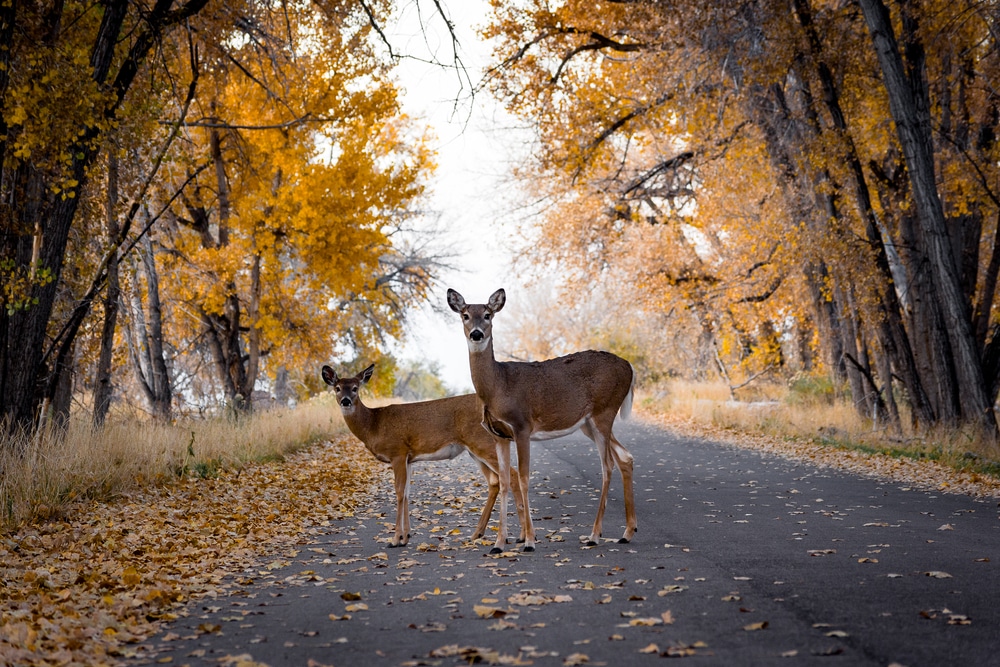Fall is fast approaching. Along with the changing leaves, cooler temperatures, and shorter days, the fall season can bring new hazards to motorists. Adverse weather conditions, back-to-school traffic, and animals pose dangers that can result in vehicle damage or injury. The following are hazards drivers should take into consideration as fall begins:
- Children—Drivers should be extra cautious in school zones and be on the lookout for children, particularly those walking and biking to school. New, inexperienced student drivers may also be navigating congested traffic for the first time. In addition, watch out for school buses displaying red flashers as most states require drivers to halt for a bus loading or unloading children.
- Darkness—In the fall, days are shorter and the nights are longer, often leading to decreased road visibility and subsequent accident risks. These issues are compounded by daylight savings time (DST), which can throw off drivers’ internal clocks and elevate the likelihood of drowsy driving. According to a multidecade study conducted by scientific journal Current Biology, fatal crashes typically rise by 6% during the first week of DST. It’s vital that drivers take precautions by getting plenty of rest and ensure that headlights, taillights, and turn signals are all working properly. Drivers should also increase their following distance and pass others slowly.
- Wildlife—Research from the Highway Data Loss Institute found that animal strike-related auto insurance claims peak at more than twice the annual average in the fall. Animals such as deer and elk are increasingly active in fall due to mating and migrating season. To avoid colliding with an animal, use extra caution at dawn and dusk, scan the road ahead, and honk the horn. Watch for animal crossing signs and drive slowly in areas where wildlife may be active. If animals dart in front of drivers’ vehicles, they should brake firmly and stay in their respective lanes. Avoid swerving, as this can lead to more severe accidents.
- Leaves—Since it rains often during the fall season, leaves can become as slippery as ice as temperatures cool. Fallen leaves can also hide potholes and road markings, making it more dangerous for drivers on the road. Drivers should reduce their speed when they notice leaves on the road and avoid driving through patches of them whenever possible.
- Sun Glare—Sunrises and sunsets can cause a large amount of glare, making it difficult to see other vehicles, pedestrians, traffic lights or the roadway. Keep an extra pair of sunglasses in the vehicle at all times and make sure the windshield is clean of all dust particles, streaks, and smudges, as these can become magnified when illuminated by sunlight. Look for sunglasses with polarized lenses rather than normal lenses, as they are treated with a chemical that filters out light, making them ideal for driving.
- Agricultural Equipment—Fall is synonymous with harvest season. As such, drivers may have to share the road with a range of heavy equipment, including tractors, combines, and trailers. To decrease the risk of accidents, drivers should give agricultural equipment ample space on the road. Even though this equipment often runs slowly, it’s important for drivers to be patient when passing these vehicles to avoid head-on collisions with other vehicles.
Next Steps
Implementing safe driving practices can help ensure drivers remain safe on the road this season. For more information, contact us via the form below today.
To learn more about the risk management services we can offer for both personal and commercial vehicles, visit our Personal Solutions and Business Solutions pages. And be sure to like us on Facebook and follow us on LinkedIn for more tips and industry news!

